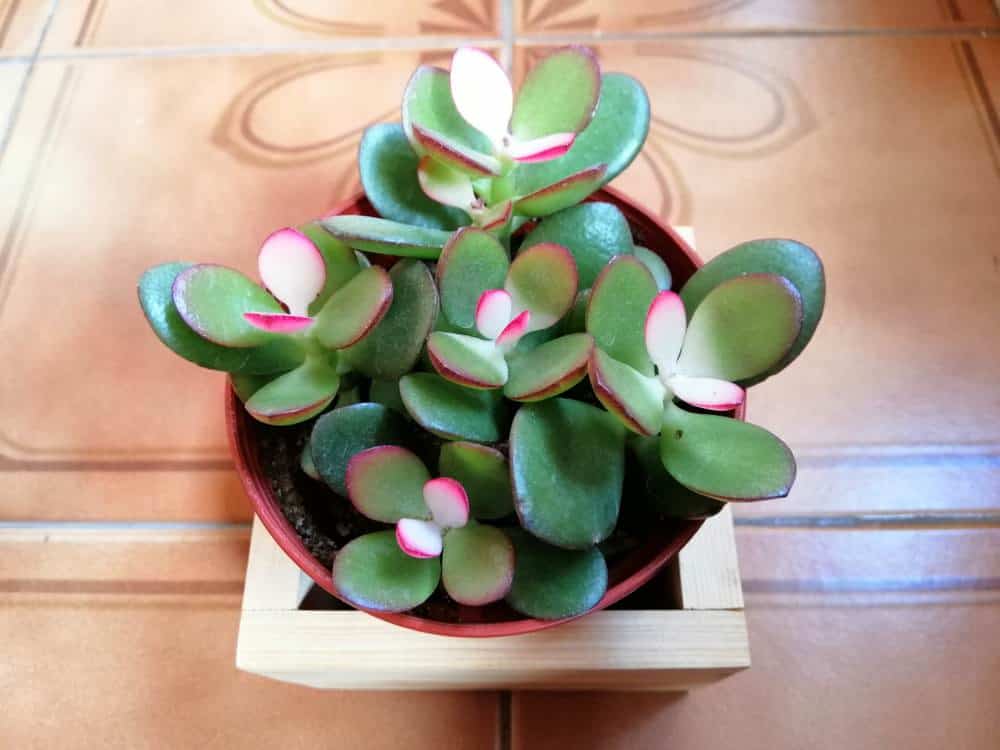Anyone obsessed with plants would be ready to grow them both outdoors and indoors. Plants enhance the beauty of a house indoors just as they do out in the garden. Also, growing plants inside the house are quite trending today. There are various plants that people love to grow indoors, and Jade plants are just one of them. There are many types of jade plants one can find to grow indoors.
If you are looking for plants that can live both in and outside your house, jade plants are one of the best options to choose from. Although, before looking at the best jade plants to grow, you should know why they are one of the most preferred.
What Are Jade Plants?
Jade plants belong to the family Crassula and include succulent plants. These are native to South Africa and there are over 200 species of crassula found around the world. The tear-shaped or oval jade-green leaves give these plants their name. Because of the ornamental value jade plants provide to a house, they are selected for indoor plantings.
Another big reason people around the world grow these plants is- jade plants are considered a sign of good luck and prosperity. These plants are set up in houses and offices to attract wealth, good luck, and prosperity.
However, there are many types of jade plants (also known as Crassula) and they might put you in a dilemma while choosing anyone. But do not worry! Here is the list of some of the most beautiful jade plants for you to choose from.
Money Plant
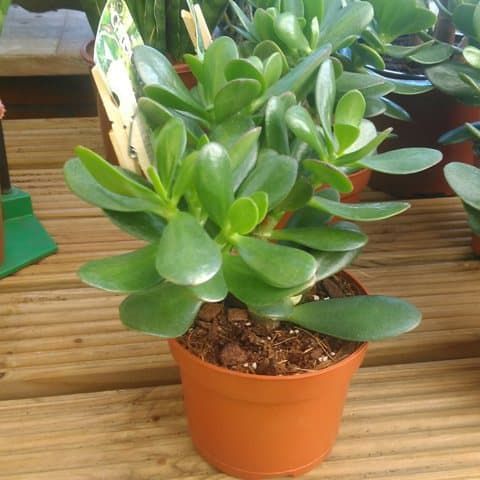
Money plant or money tree is one of the most common and most popular types of jade plants preferred. It is also called a money tree because it can also look like a tree once grown. This plant grows star-shaped pale flowers in the shades of white and pink that bloom usually in the winters.
Comfortable both indoors and outdoors, this plant has succulent tear-shaped green leaves that can grow 3 to 9 cm long. Most of the money plants get a lush look due to their numerous leaves. Keeping the plant in a bright location yet away from direct sunlight would be perfect. Some people also believe the plant to be a sign of good luck and suggest planting it in the money area of a home or office. In the right conditions, money plants can live up to around 40 years.
Hummel’s Sunset
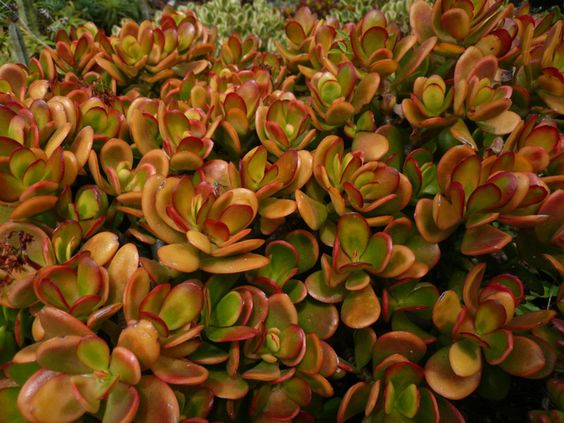
Also known as the Golden jade tree, the hummel’s sunset is an extremely famous and award-winning evergreen succulent plant. This plant gets its name from its beautiful foliage of green and golden yellow colours. These tear-shaped leaves also show edges in red colour which gets more intense in the winters. The leaves also turn into a mustard yellow shade in the cooler months due to the unavailability of optimum sunshine.
Just like most of the crassulas, this plant also shows thick woody stems and branches, and it spreads both out and up, growing up to a height of 3 feet. It can thrive in almost all kinds of soil with a neutral pH. Also, it grows well in both full and partial sun positions.
Lemon and Lime

The lemon and lime crassula ovata are one of the most preferred variegated indoor plants. This elegant shrub shows beautiful green foliage with pale and yellow stripes. These leaves are elongated and oval and grow up to 5 cm long. These leaves might also show reddish or pinkish margins when grown in full sun position.
Lemon N lime also grows star-shaped flowers in winters. This plant usually grows up to a height of 4 feet but can be grown into a smaller shrub by proper pruning and trimming. Moreover, it is a slow grower, needs a lot of water if the soil is dry and needs protection from extreme frost.
Minima
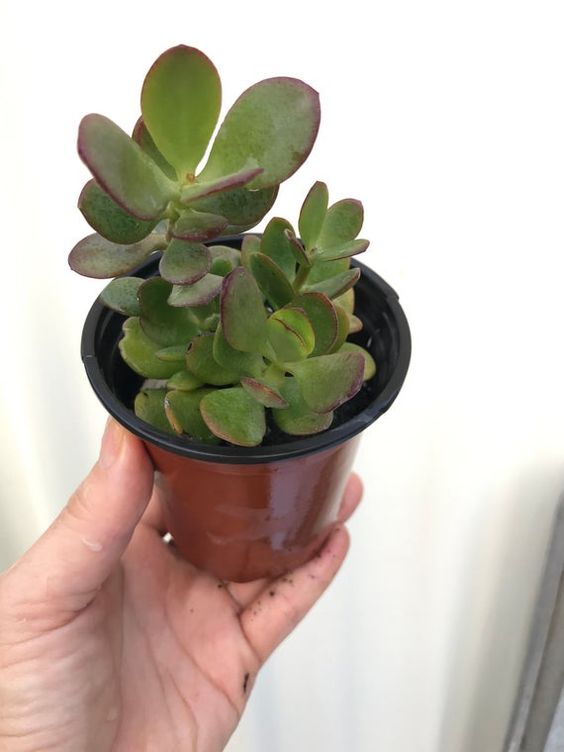
This is a mini jade plant that comes quite small and looks cute. As it is a dwarf version, it does not grow more than 75cm in height and shows a spread of around 50cm. Also, it does not have foliage as dense as other jades due to its small size. It has glossy and thick green leaves with little reddish edges.
You can grow this plant in both full sun and partial sun positions. Well-drained soil is needed for these plants to thrive well. Very little water works for minima plants and protection from frost is needed. If you plan on having this little buddy in your house, the time between March and June is the best for setting it up.
Skinny Fingers

The name of this plant comes from its long thin succulent leaves that look like fingers. These leaves can grow up to 5 cm long and show red tips. This crassula grows up to around 3 feet long and 2 feet wide. You would find it similar in appearance to the crassulas Hobbit and Gollum.
Having short branches, this plant looks quite shrubby in appearance and shows pale flowers in the winters. This plant thrives the best in sunny, hot, and dry environments but is also comfortable in partial sun positions. However, well-drained soil is extremely needed for these plants throughout the year to grow well. But overwatering in the winters may lead to bad results.
Pink Jade Plant
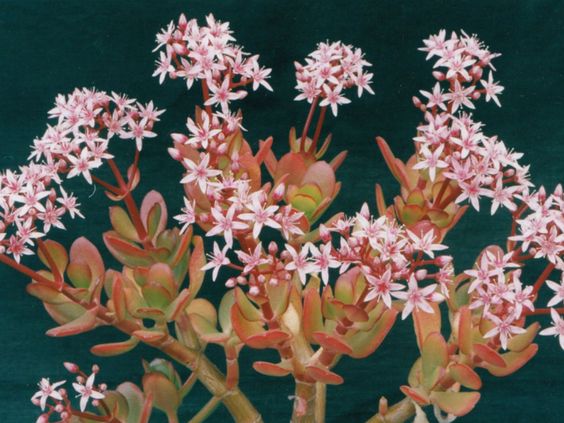
This jade plant is also called ‘Pink beauty’, the reason being its stems and flowers. While other jade plants show brown stems, the pink jade plant shows pink stems and pink flowers. Being beautiful in pink, this jade is also one of the largest jades with a height of around 5 feet once grown.
The pink flowers on this jade come in a star shape and clusters in the winters. These flowers also give out a pleasant fragrance to glow up the room. You will find glossy-green foliage with red margins on this plant.
Gollum Crassula Ovata
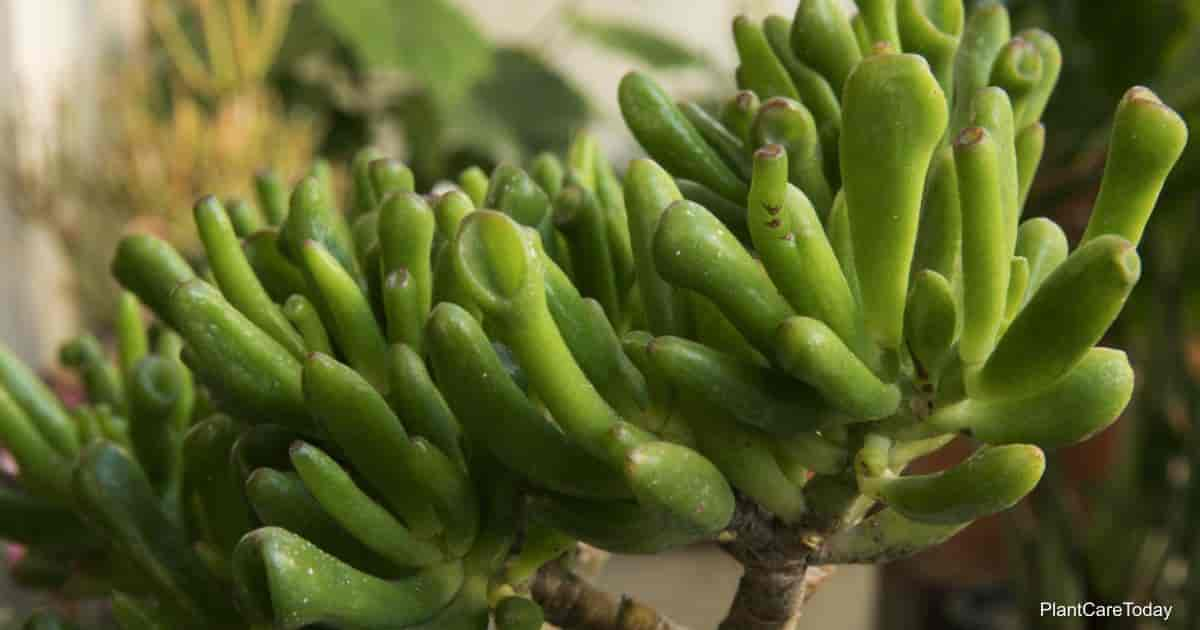
Also known as finger jade or hobbit’s pipe, Gollum crassula is a small shrubby succulent that grows up to 3 feet tall and around 2 feet wide. The names of this plant come from the tubular jade-green leaves that grow in clusters from the branches. Due to its relatively smaller size than other jade plants, Gollum crassula is considered as an ideal type in the species to prune into a jade bonsai tree.
This plant thrives the best in bright and airy conditions. Flowers in the shades of pink or white may be found in the winters. Considerable watering in summers and almost no water in winters is needed for this plant.
Hobbit
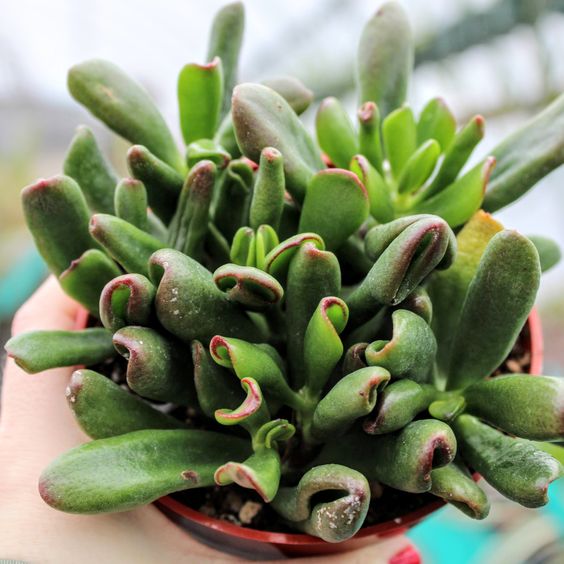
Hobbits are one of the popular jade plants preferred for making bonsai trees. However, proper pruning and trimming are needed to make and maintain it as a bonsai. Their leaves are one of the most unique jade leaves and this is probably a major reason people prefer to have them in their homes. The jade-green leaves come kind of tubular and open on themselves at the top with reddish margins.
Hobbit crassulas require water only once every three to four weeks as their leaves store enough water to stand well throughout any drought. Overwatering the hobbit might ruin the plant, so make sure that you provide minimal water to it.
Harbour Lights

The harbour lights plant looks very similar in appearance to the plant Botany Bay because of its foliage in colours jade-green and red. The woody stems of this plant produce leave smaller in size as compared to other jade plants and these leaves might also turn intense red in the cooler months. Also, like all other jade plants, harbour lights produce starry flowers in pink and white shades. These flowers bloom in late autumn till early winters.
Just like all other types of jade plants, harbour lights also thrive well in drained soil. If given the right conditions, this plant offers delightful visual interest throughout the year.
Red Jade Plant
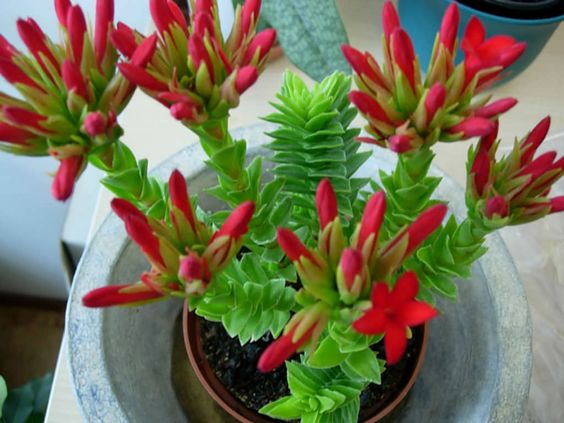
Also known as Klipblom, the red jade plant is a small succulent shrub that can grow up to 16 inches long. It has very few stems that branch right from the base. You will see flat leaves in an oval shape that grow in an overlapping manner. In the summers, tiny bright rosy, red flowers also bloom on the top in dense clusters and offer pleasant fragrance.
Like with all the types of jade plants, minimal water is needed for the red jade plants to grow well, overwatering would ruin the plant. Though easy to grow, these plants easily attract bugs and a few fungal diseases, so attention is needed.
Silver Jade Plant
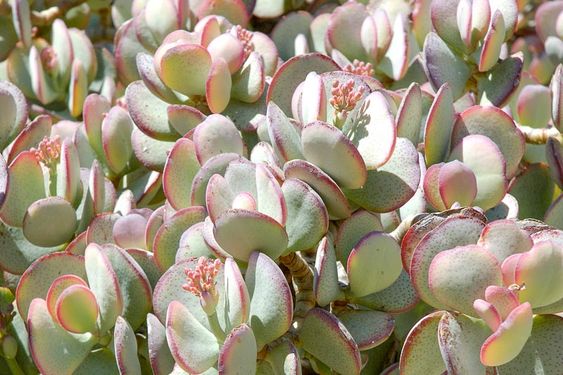
The Silver Jade plant is one of the most famous jades preferred as a houseplant. The rounded leaves in the shades of blue, green, and grey with maroon edges make it quite attractive. This is a small growing shrub that also blooms pink and white starry flowers in clusters during the winters, but they are rarely found on the houseplants.
A bright and airy atmosphere works well for these plants to grow, though partial sun positions are also accepted by this jade plant. In the right conditions, this plant can grow up to 2.5 meters in height and is believed to live for decades if maintained properly.
Silverspring Time
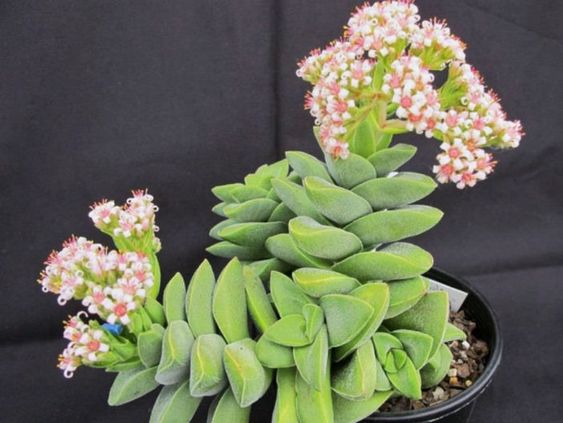
The crassula silver springtime is a slow-growing jade plant with a thin stem that is seen packed by chubby and fleshy leaves. This is a dwarf plant that does not grow more than 20 cm in height and 15 cm in width. Its dwarf look makes it best suitable for office desks and tables.
Silversprings require typical watering methods, just like other jade plants, excessive watering can ruin the plant. Most people prefer the soak and dry method of watering for this jade plant. It needs bright and airy conditions to thrive well and protection from frost is needed. Moreover, it is a very slow-growing plant.
Rupestris
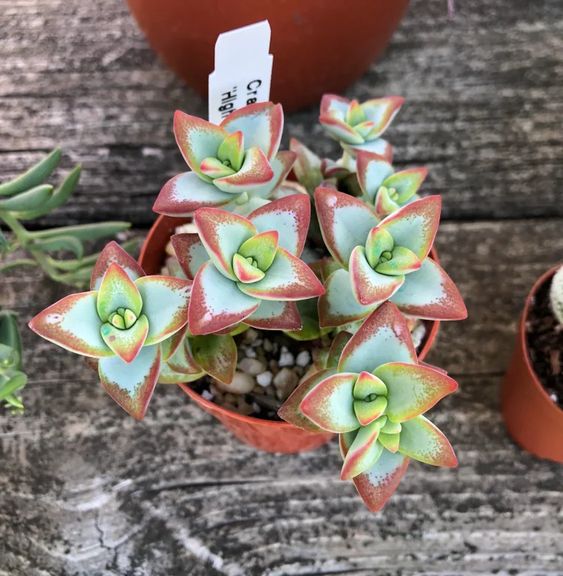
This is a beautiful award-winning succulent that is also known by the names Bead Vine and Necklace Vine. This shrub has erected or spreading thin branches and woody near the base. You will see beautiful leaves varying in their sizes, in the shades of greyish-green and brownish red with yellow and red margins. The leaves have an opposite arrangement, are oval and lance in shape and grow between 1 to 2 cm long.
From winters till spring, you might also see flowers blooming in clusters in the shades of pink and white. Crassula Rupestris requires a soak and dry method of watering and well-drained soil to thrive. A bright and airy atmosphere should be set up for this plant to grow indoors and if kept outdoors protection in the cooler months should be provided.
Ripple Jade
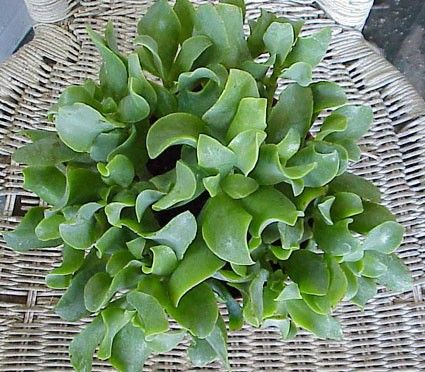
The ripple jade is a succulent plant that belongs to the list of most unique types of jade plants. It has the most rippled leaves than any other types of jade plants and so getting its name. Grown as a houseplant, this can grow up to 4 feet in height. It has bluish-green leaves that are rippled at the top with purple-like edges.
Just like the other jades, Ripple jade also requires bright airy conditions and protection from frost to thrive the best. The common pink and white flowers can also bloom on ripple jade, but it is rare to find them on a houseplant.
Blush Plakkie
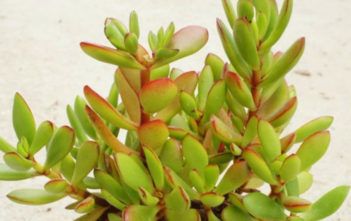
Blush Plakkie is a succulent shrub that shows erect and thin woody branches. This shrub is known for its unique sharp leaves in the shade of yellowish green. Reddish margins are also seen at the top of the leaves which slowly turns the leaves into a completely brownish red colour. Blush plakkie also blooms individual flowers that are quite tiny and in yellowish green colour.
Regular watering can be done in the initial growth stages of blush plakkie. However, minimal water will be required once the plant has grown.
Marnieriana
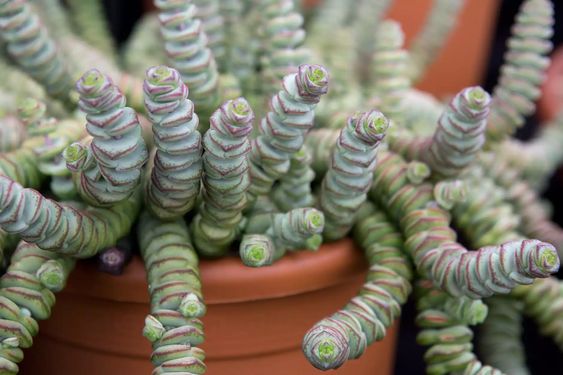
This succulent is also known as the Baby necklace and worm plant. Marnieriana has thick and fleshy green leaves that grow tightly packed around the stems with reddish margins at the top. This plant is quite easy to grow and just like most jade plants, it does not have any major needs. It is a slow grower though. This succulent grows around 20 cm in height.
One can see the branches initially growing straight, but they turn and twist downwards after some time when planted indoors.
Sericea
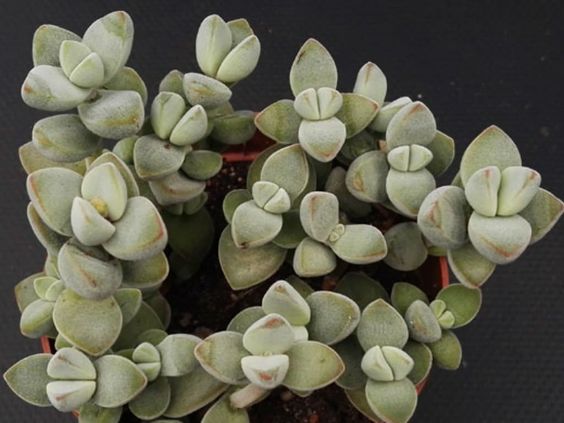
Crassula Sericea is a very branched succulent shrub known for its super thick fragile leaves. The leaves on sericea come in different sizes in inversely egg-shaped to orbicular shape. Their lower surface is fully rounded, and the upper surface might be flattened or round. These leaves get swollen after rains and flattened in extreme summers or drought. This short succulent grows up to 20 cm in height with an equal diameter.
The greyish-green leaves also show red margins at the top. Flowers may also be seen blooming in the winters in a tiny size and white colour.
Campfire

Among all the types of jade plants discussed here, the crassula campfire is one of the most attractive ones. It is named and grown mostly because of its beautiful foliage. The leaves grow propeller-shaped in green colour which turns into bright red in full sun or cooler months. This plant grows up to 60 cm tall and is summer dormant. The common flowers also bloom on this plant which attracts bees and butterflies.
Due to its amazing drought tolerance and love for extreme sunlight, it is best suitable for dry and sunny locations where nothing else can be grown. This fast-growing succulent cannot thrive indoors as it loves the sun.
Calico Kitten
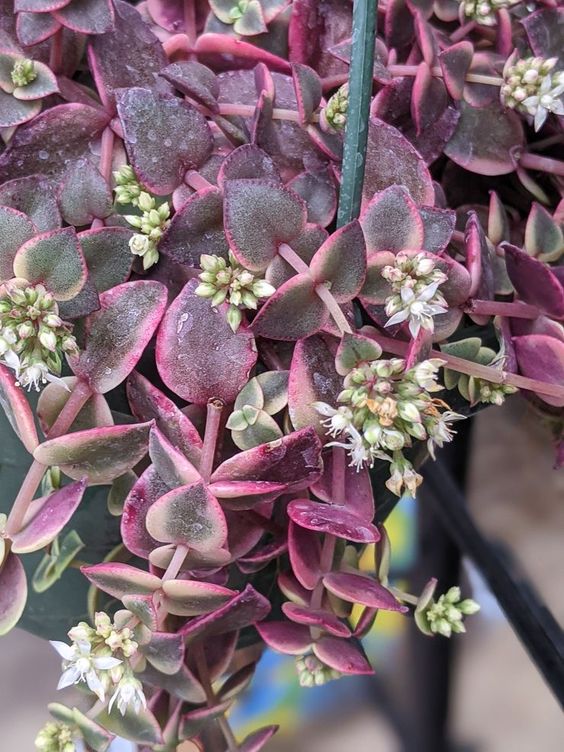
Calico Kitten jade plant looks spectacular with its small heart-shaped leaves that come in beautiful shades of green and yellow with edges of rosy, pink colour. Calico kittens tolerate both full sun and partial sun positions but might need some protection from the full sun as it may cause burning to the plant. If planted with the right care and maintenance, this plant grows small starry flowers at the tips of the branches. These flowers come in white colour in spring.
In the initial stages, this plant requires nicely moist soil. However, it becomes drought-hardy once established and matured. Moreover, being a versatile plant, Calico kittens can be along the walls, in planters, pots or along borders.
Moon Glow
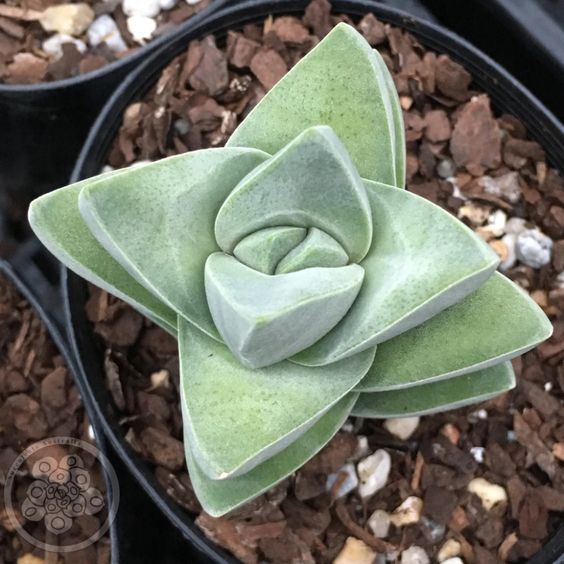
This is another unique succulent in the family of jade plants. This plant gets its name from its leaves that show a greyish green colour, giving the plant a moony glow. The leaves of this plant grow long and narrow with small white hairs on them, this gives them a silvery shine and makes them look like they are covered in frost. These leaves might also show a tint of red at their edges.
This plant grows short and cute, not exceeding a height of 20 cm. This plant needs a space full of bright, filtered light and an airy atmosphere for the leaves and stems to live. Due to its fleshy watery leaves, adequate watering would be needed only when the soil completely dries out.
Propeller Plant
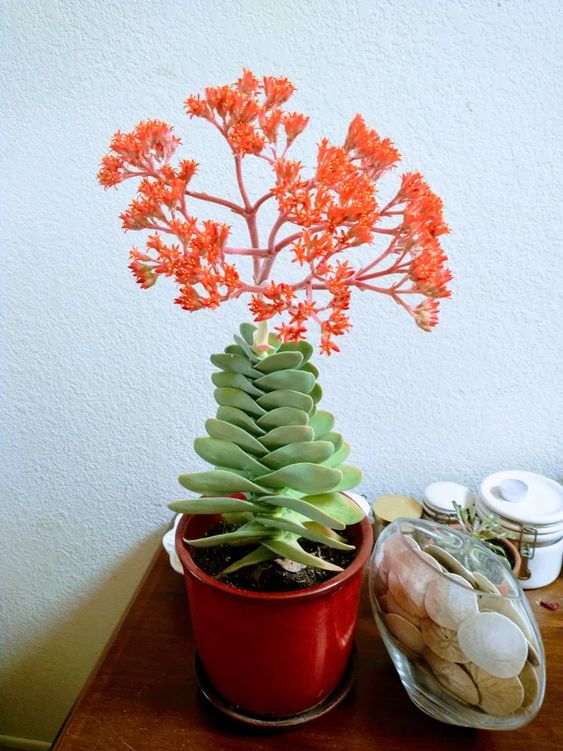
The propeller plant, also known as the Airplane plant, gets its name from its flat propeller-like leaves. The plant shows foliage in greyish green colour and if nicely cared for, you can also see bright red blooms on the plant. These blooms can attract bees and butterflies with their cinnamon-like smell when planted out.
Propellers grow not more than 30 cm in height as well as width. They thrive the best in full sun positions and need minimal water. Overwatering can ruin the plant sometimes and protection from frost is also needed.
Fairy Crassula

Also known as London pride, the fairy crassula is a perennial succulent plant. This plant branches right from the bottom to form density. The branches are green, decumbent and the leaves are oval to round around 6 cm long and 4 to 5 cm wide found in the shades of dark and light green. The leaves are found in an arrangement of opposite pairing.
Fairy crassula also blooms clusters of tiny pink and white flowers at the top in winters. In the right conditions and proper maintenance, this jade can grow up to a height of 8 inches. It needs protection from the extreme frost of winters as well as the extreme heat of the summers.
Which One Did You Choose?
Due to their easy-going and forgiving nature, jade plants are adorned by plant lovers. All the above-mentioned types of jade plants are some of the best and common ones. These plants can be easily found in any of your nearest nurseries or at online stores. These plants will not only enhance the beauty of your home but might also bring you good luck.

